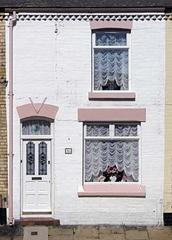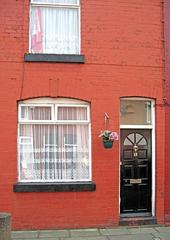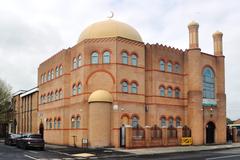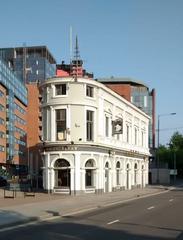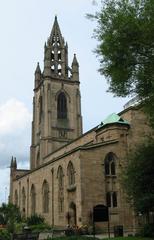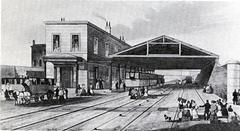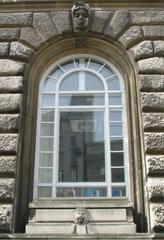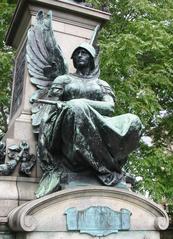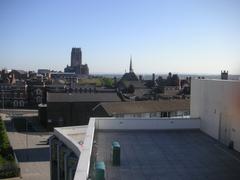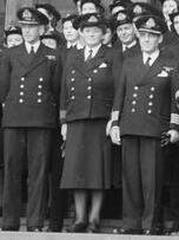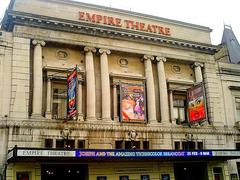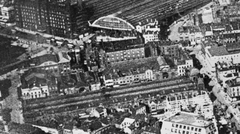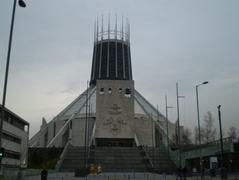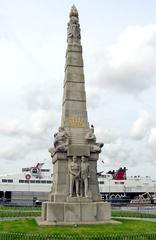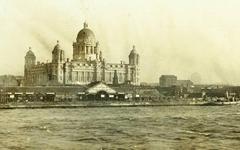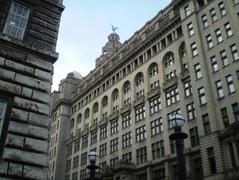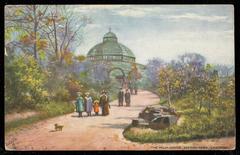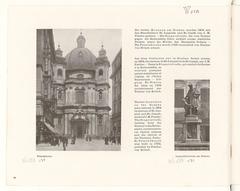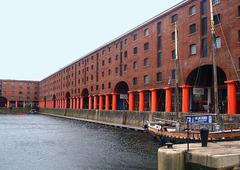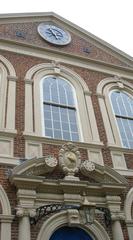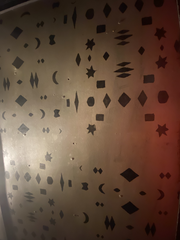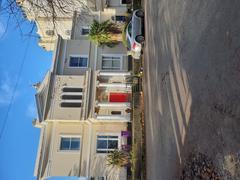Liverpool Royal Infirmary Visiting Hours, Tickets, and Historical Significance
Date: 04/07/2025
Introduction
Liverpool Royal Infirmary is a cornerstone of Liverpool’s medical and architectural heritage. Founded in the 18th century, the institution has evolved from a pioneering hospital serving a rapidly growing city to a symbol of Victorian architectural innovation and a modern hub for education and research. Today, while clinical services are delivered at the adjacent Royal Liverpool University Hospital, the historic Waterhouse Building stands as a testament to centuries of healthcare advancement and civic pride. This comprehensive guide details the infirmary’s history, visiting hours, ticketing, accessibility, and visitor tips, offering valuable insights for patients, history enthusiasts, and tourists alike (Liverpool Royal Infirmary: A Historical Landmark and Visitor’s Guide, Liverpool Royal Infirmary Visiting Hours, Tickets, and Historical Guide, Liverpool Royal Infirmary Visiting Hours, Tickets, and Historical Insights).
Table of Contents
- Early Foundations and Growth
- Architectural Evolution and Waterhouse’s Legacy
- Role in Medical Education and Innovation
- 20th Century Transition and NHS Integration
- Adaptive Reuse and Heritage Preservation
- Visiting Information: Hours, Tickets, and Accessibility
- Surrounding Attractions and Tour Tips
- Frequently Asked Questions
- Conclusion and Further Resources
Early Foundations and Growth
Origins in 18th-Century Liverpool
Conceived in 1744 to address Liverpool’s growing healthcare needs, the Liverpool Royal Infirmary opened in 1749 at Shaw’s Brow (now William Brown Street). The original three-storey building, funded by local doctors and merchants, accommodated 30 beds. Expansion soon followed: a new wing was added in 1771, and a separate asylum for mental health was established in 1792 (Medical Memories).
Expansion to Brownlow Hill
In 1824, the infirmary relocated to Brownlow Hill, occupying a John Foster-designed Greek Revival building on healthier, elevated ground. It was granted “Royal” status after Queen Victoria’s 1851 visit (Liverpool Echo). The Brownlow Hill site became a centre for innovation, notably with the creation of the world’s first district nursing service in 1859, inspired by Florence Nightingale and established by William Rathbone VI (Wikipedia).
Architectural Evolution and Waterhouse’s Legacy
The Waterhouse Building at Pembroke Place
By the late 19th century, overcrowding necessitated a new facility. In 1885, Sir Alfred Waterhouse—famed for the Natural History Museum—was commissioned, with Florence Nightingale contributing to the “pavilion” ward design. The resulting building, opened in 1889, showcased Victorian red brick and terracotta, high ceilings, glazed brick interiors, and advanced ventilation and hygiene features (Liv Nurses League, Wikipedia).
Later Additions: Cedar House
As demand grew, Cedar House was added in 1933 for nurse accommodation. Its 2019 refurbishment transformed it into a state-of-the-art teaching hub while preserving historic features like the original dining hall (University of Liverpool).
Role in Medical Education and Innovation
Pioneering Nurse Training
The Liverpool Royal Infirmary was a forerunner in nurse training, establishing a formal school in 1862 under Nightingale’s guidance. This set national standards and led to the foundation of the Queen’s Nursing Institute (Liv Nurses League).
Medical Teaching and Research
The hospital was integral to the University of Liverpool’s medical school, fostering advances in surgery, pathology, and public health. Its clinical-academic integration produced Nobel Laureates and shaped the trajectory of medical education in the UK (University of Liverpool).
20th Century Transition and NHS Integration
Wartime Contributions
During both World Wars, the infirmary treated military and civilian casualties, influencing the development of trauma and emergency medicine (Medical Memories).
NHS Era and Closure
In 1948, the institution joined the NHS. By 1978, its facilities were outdated, prompting the move to the new Royal Liverpool University Hospital. The Waterhouse Building was repurposed, closing a historic era but beginning a new chapter in education and research (Wikipedia, Liverpool Echo).
Adaptive Reuse and Heritage Preservation
From Infirmary to University Centre
After years of vacancy, the University of Liverpool acquired the Waterhouse Building in 1995, transforming it into research labs, conference centres, and administrative offices. The Foresight Centre, simulation suites, and teaching spaces now occupy its historic wards (Liv Nurses League).
Architectural and Cultural Significance
The building’s Victorian design, innovative ward structure, and historic interiors (including stained glass, tilework, and woodwork) are preserved and occasionally open to the public during heritage events (University of Liverpool). Its legacy is celebrated in exhibitions, academic programs, and as a filming location.
Visiting Information: Hours, Tickets, and Accessibility
Location and Directions
- Address: Pembroke Place, Liverpool, L3 5PU
- Transport: 10 minutes’ walk from Liverpool Lime Street Station; multiple bus routes serve the area.
- Parking: Limited on-site; public parking nearby. Public transport is recommended (Hospital Visit Times).
Visiting Hours and Admission
- Royal Liverpool University Hospital: Open visiting hours are typically 2:00 pm–8:00 pm (verify with the hospital or ward for updates).
- Historic Waterhouse Building: Public access is limited to scheduled heritage open days, alumni events, and guided tours. Advance booking is required; tours are often free (Royal Liverpool University Hospital, University of Liverpool heritage events).
Accessibility
- Facilities: Ramps, lifts, accessible toilets in modern and refurbished areas; some Victorian sections may have limited access.
- Visitor Support: Multi-faith chaplaincy, quiet rooms, waiting areas, and free Wi-Fi available.
Tickets and Booking
No general admission ticket is needed for hospital visits. For heritage tours of the old infirmary, check the University of Liverpool’s events calendar or local heritage groups. Book in advance due to limited capacity.
Surrounding Attractions and Tour Tips
- Nearby Sites: Victoria Gallery & Museum, Liverpool Cathedral, Walker Art Gallery, World Museum, Albert Dock, Georgian Quarter.
- Walking Tours: Join Liverpool Famous Walking Tours or similar providers for guided experiences.
- Photography: Exterior photography of the Waterhouse Building is welcome; please respect privacy and signage on hospital grounds.
- Combine Visits: The Knowledge Quarter is rich in history, architecture, and culture, perfect for a day of exploration (onedayitinerary.com).
Frequently Asked Questions (FAQ)
Q: What are the patient visiting hours?
A: 2:00 pm–8:00 pm for most wards at the Royal Liverpool University Hospital. Always check for specific updates.
Q: Do I need a ticket to visit?
A: No ticket is needed for patient visits. Heritage tours of the old building require advance booking.
Q: Is the Waterhouse Building open for public tours?
A: Only during special events or pre-booked tours. Check University of Liverpool heritage events.
Q: Are the facilities accessible?
A: Most modern spaces and Cedar House are accessible. Some historic areas may have limited access.
Q: Can I take photos?
A: Not in patient areas; exterior and architectural photography is permitted.
Conclusion
Liverpool Royal Infirmary’s legacy bridges centuries of healthcare innovation and civic growth. Whether visiting patients, exploring heritage architecture, or learning about medical history, the site offers a unique blend of past and present. The transition to the new Royal Liverpool University Hospital ensures ongoing excellence, while the Waterhouse Building remains a landmark of Victorian ingenuity and educational advancement. Stay informed about tours and events via official channels, and consider combining your visit with nearby cultural attractions for a truly immersive Liverpool experience.
Further Resources
- Royal Liverpool University Hospital Official Site
- University of Liverpool Heritage Events
- Visit Liverpool Tourism
- Liverpool Famous Walking Tours
- Medical Memories: Liverpool’s First Infirmary
- Hospital Visit Times
- Laing O’Rourke - Royal Liverpool Project
- Liverpool City Council Archives
- one day in Liverpool itinerary
- wanderlog.com - The Infirmary
